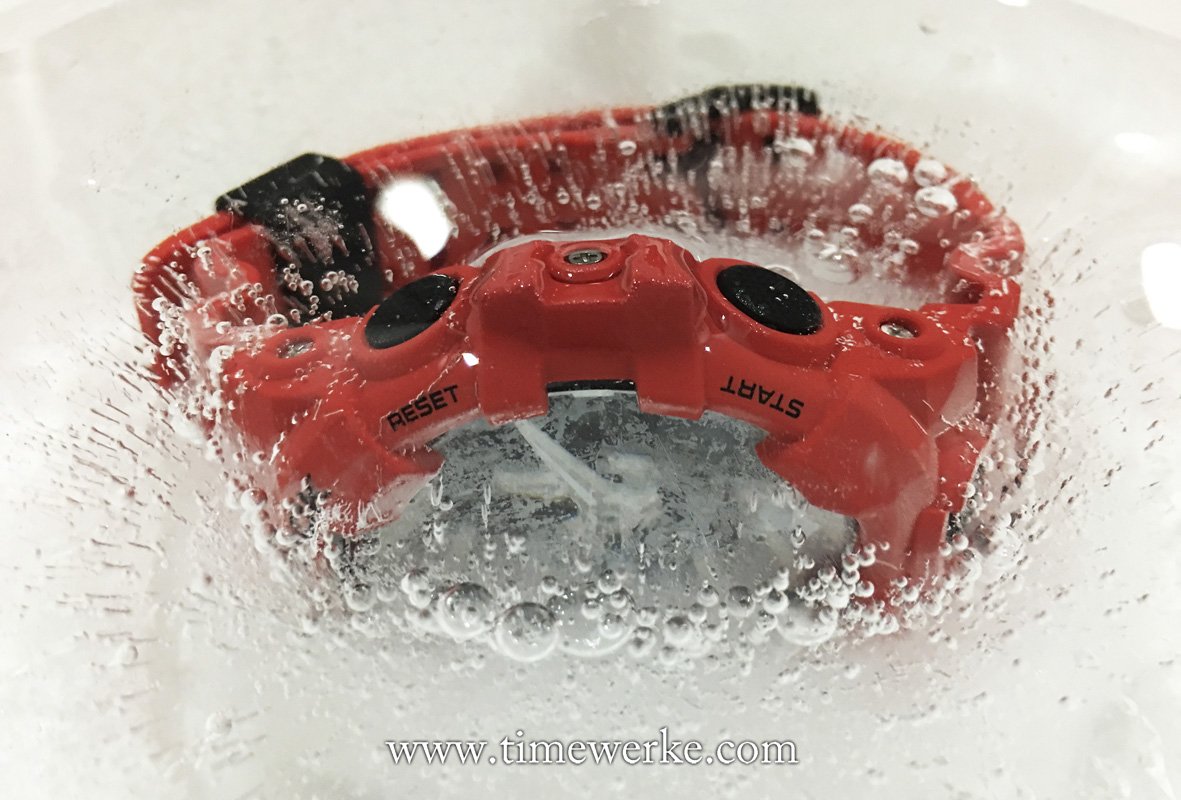
The Casio G-Shock GA-700 was frozen for 48 hours. Did it survive the freezing ordeal? The photo of the Casio G-Shock GA-700 as seen above was taken when it was frozen for more than 1 day (around 26 hours) in the freezer compartment. Photo: © TANG Portfolio / TimeWerke. Elfa / Timmy.
The Casio G-Shock is a highly robust watch and perhaps one of the most famous tests it had to pass before it was eventually launched was the secret experiments conducted by Kikuo Ibe, the father of the G-Shock, and his team from the third-floor restroom of Casio’s research and development building.
Watches were flung out from the restroom window and they landed outside the building. Through these “drop” tests, Ibe and his team could assess how their secret prototype watches were able to withstand a drop from the height of 10 metres or around 33 feet.
They succeeded in creating a protective “armour” for the quartz movement that could withstand the extremes and the very first G-Shock was launched in 1983 and the rest, as they say, is history.
What about thermal shocks? Will Casio’s G-Shock be able to withstand extreme temperatures?
Well, to find out, the Casio G-Shock GA-700 was put to the test. The first experiment was to freeze the G-Shock for two days or 48 hours. Will the G-Shock freeze up and “die”?
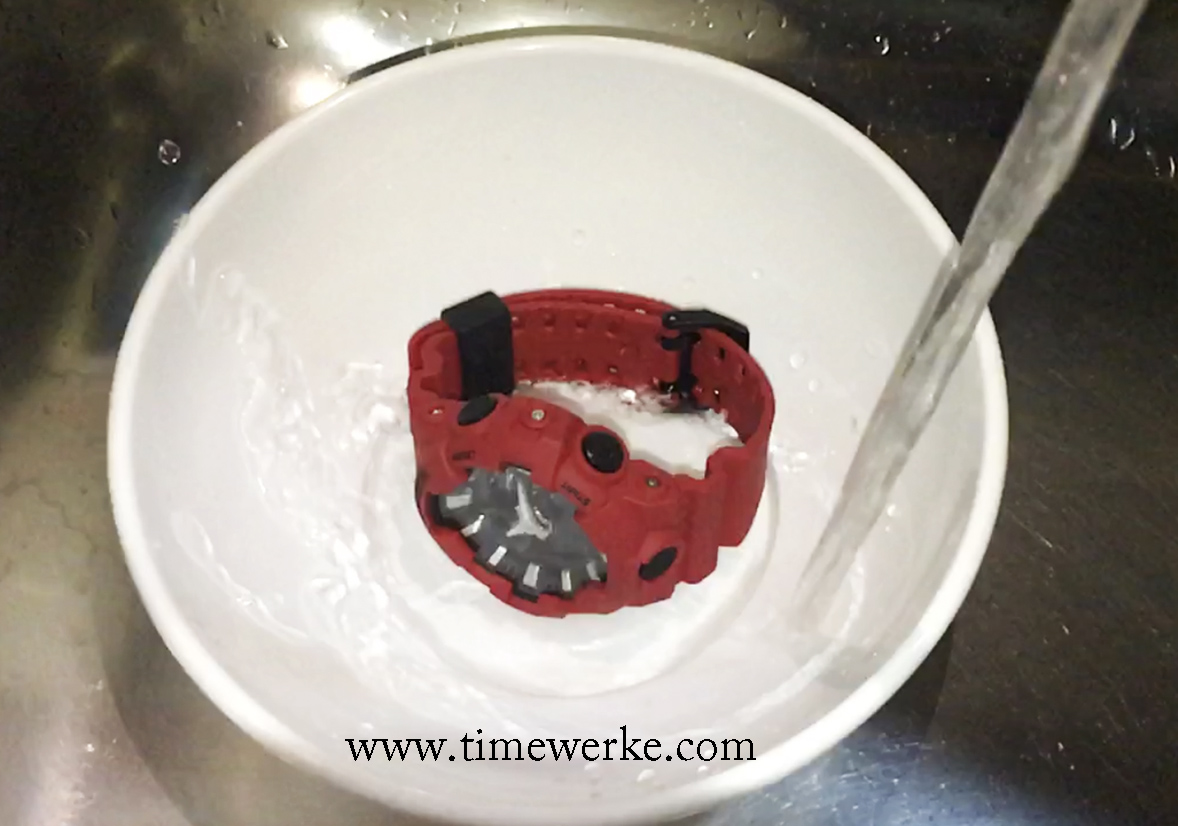
Our extreme cold “torture test” began by filling up a bowl with water that contained the Casio G-Shock GA-700 before placing it in the freezer compartment for 48 hours. Photo: © TANG Portfolio / TimeWerke. Elfa / Timmy.
Our freeze “torture test” began on 24 April 2017 at around 10.15pm after we placed the G-Shock GA-700 that was in a bowl filled with water into the freezer compartment.
Bear in mind that the G-Shock GA-700 is water-resistant to 200 metres and do note that the average temperature in the freezer compartment is minus 16 degrees Celsius or 3.2 degrees Fahrenheit.
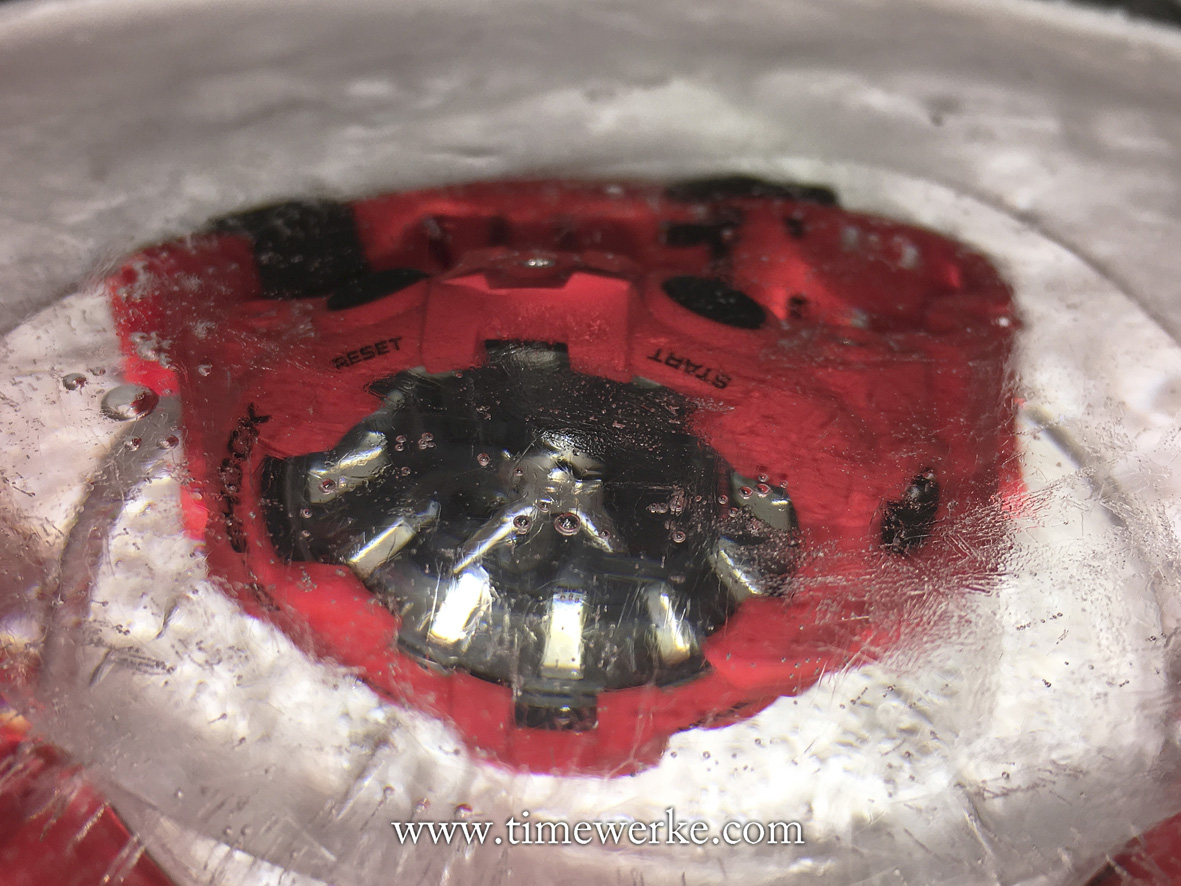
The Casio G-Shock GA-700 after close to 10 hours in the freezer. It was still ticking as we could see that the minute hand was still moving. Photo: © TANG Portfolio / TimeWerke. Elfa / Timmy.
Our video below, uploaded to youtube, provides a good visual overview of what the Casio G-Shock GA-700 underwent during its 50-hour torture test.
Video source: YouTube, TimeWerke Videos
The G-Shock GA-700 was taken out some 24 hours later and it was frozen in a block of ice.
We took it out again after 48 hours and defrosting began.
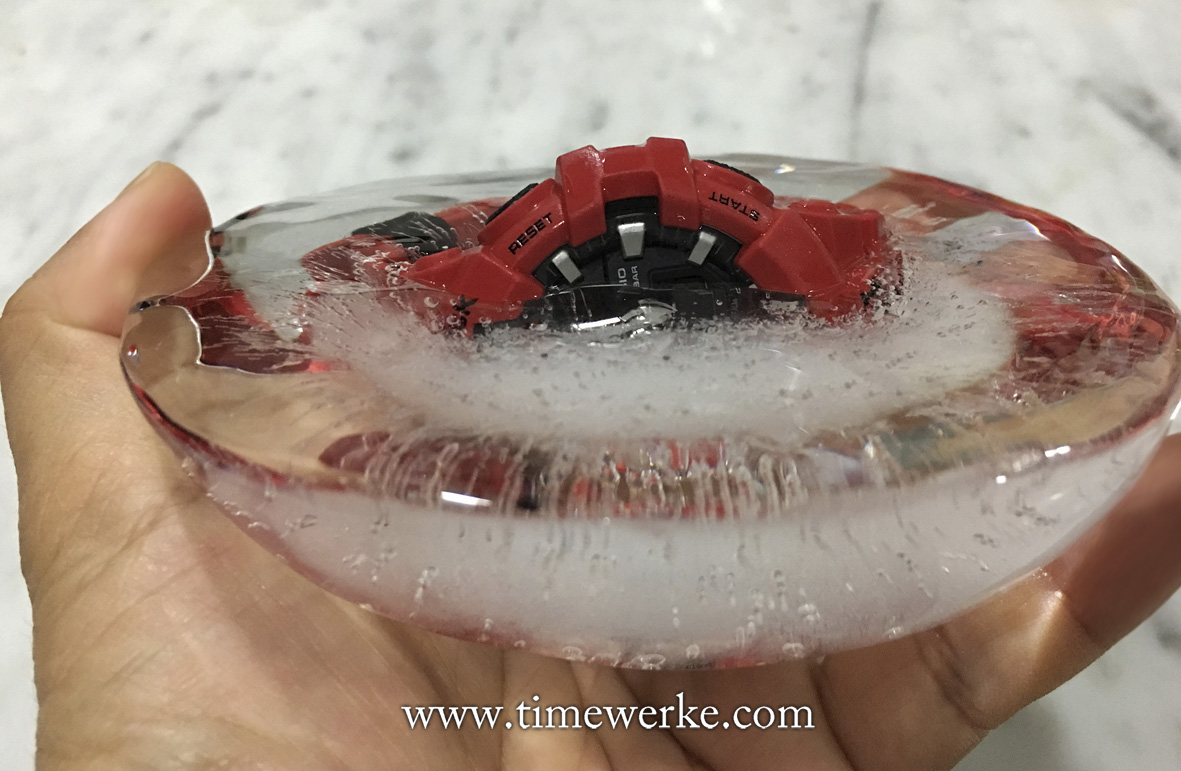
The Casio G-Shock GA-700 defrosting after 48 hours in the freezer. The average freezer temperature is minus 16 degrees Celsius or 3.2 degrees Fahrenheit. Photo: © TANG Portfolio / TimeWerke. Elfa / Timmy.
At around 12.30 am on 27 April 2017 as the block of ice was melting, you can clearly see the minute hand of the Casio GA-700 moving through the time-lapse video (Reference: the TimeWerke Video above).
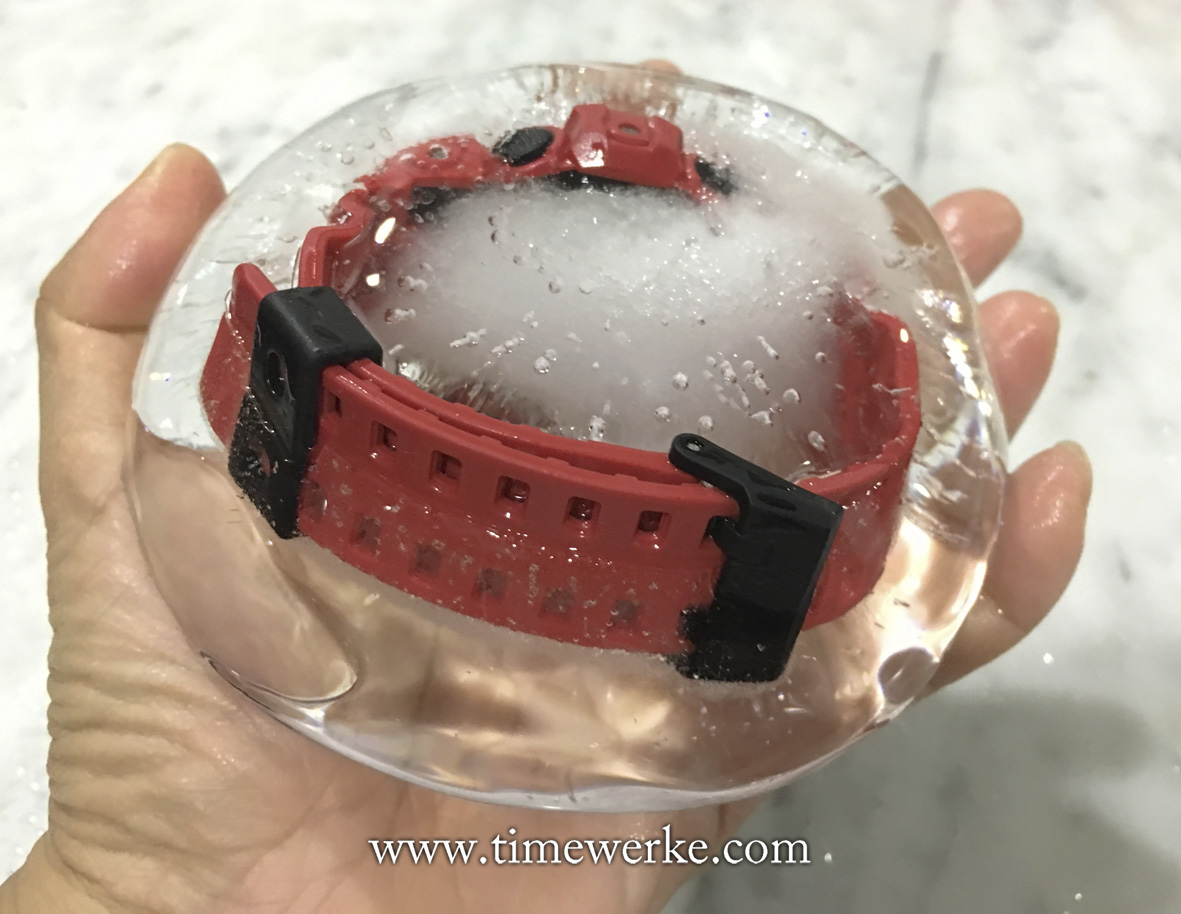
View from the rear after 48 hours of freezing. The entire Casio G-Shock GA-700 was frozen in ice. Photo: © TANG Portfolio / TimeWerke. Elfa / Timmy.
When we checked the time display on the Casio G-Shock GA-700 at 1am on 27 April 2017, it was still in sync with the time on our iPhone despite having undergone 48 hours of sub-zero temperatures and a further 2 hours of defrosting time.
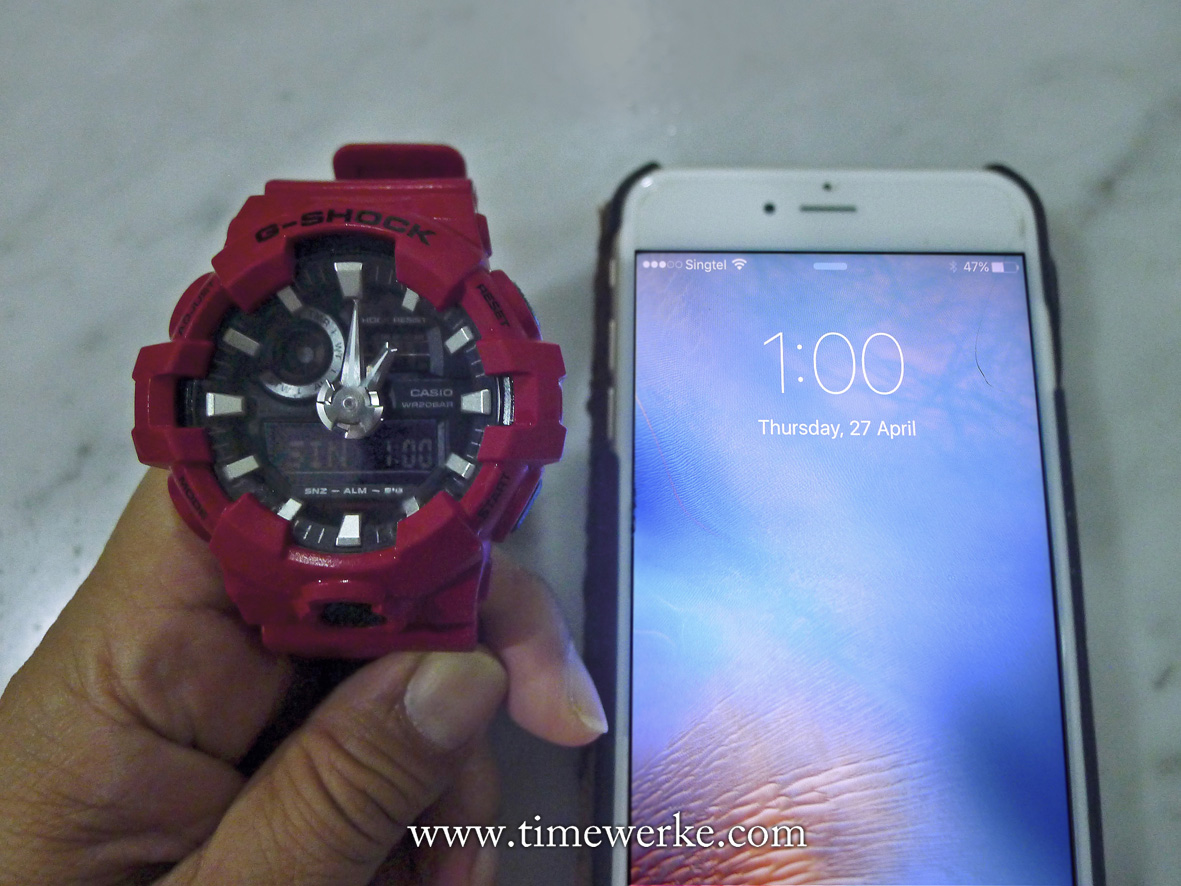
After being frozen for 2 days (48 hours) and defrosting for another 2 hours, the Casio G-Shock GA-700 was still in working condition and its time remained in sync with our iPhone. Photo: © TANG Portfolio / TimeWerke. Elfa / Timmy.
The Casio G-Shock GA-700 did not freeze up; it survived, living up to its G-Shock reputation.
TimeWerke now has a YouTube video channel. More Casio G-Shock torture test videos can be found on our TimeWerke Videos channel. Visit TimeWerke Videos on YouTube and be informed and entertained.
Our very first TimeWerke video, uploaded on 21 June 2017, is a short dive video with Seiko’s Prospex “Tuna” SRPA99K1.
